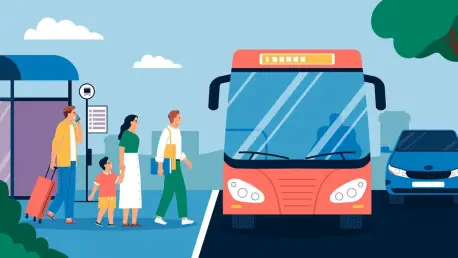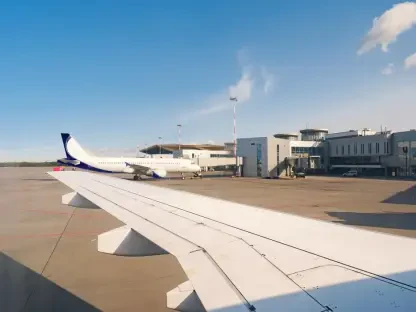Picture a crowded highway at dusk, where a packed motorcoach suddenly slows to a crawl, its speed slashed to a mere 5 miles per hour due to a tiny sensor glitch in its diesel engine, leaving passengers anxious, the driver scrambling for solutions, and traffic piling up behind. This isn’t a rare nightmare—it’s been a harsh reality for countless bus operators across the nation, where safety hangs in the balance over a technicality. But a seismic shift has arrived: the Environmental Protection Agency (EPA), under the Trump administration, has rolled out bold new rules to tackle this crisis head-on, promising to keep buses rolling and passengers secure. What sparked this change, and how will it reshape travel on America’s roads?
The significance of this policy overhaul cannot be overstated. For years, abrupt engine power reductions—known as derates—triggered by faults in diesel exhaust fluid (DEF) systems have stranded buses, disrupted supply chains, and endangered lives. Announced at the Iowa State Fair by EPA Administrator Lee Zeldin alongside key figures like Senator Joni Ernst, this regulatory relief extends the timeline before derates kick in, offering a lifeline to industries from passenger transport to agriculture. With projected savings of $727 million annually for family farms alone, the impact stretches far beyond the highway, striking a balance between environmental goals and operational safety. This story dives deep into the hidden dangers, the policy’s nuts and bolts, and the voices driving this long-awaited reform.
Why Are Buses Stalling on Highways?
Across the country, bus operators have grappled with a frustrating and dangerous phenomenon: vehicles grinding to a near halt mid-journey. A minor failure in a DEF system sensor, meant to control emissions, can trigger a derate, slashing engine power and reducing speeds to as low as 5 miles per hour in just four hours under the old rules. This sudden breakdown doesn’t just delay trips; it leaves passengers vulnerable on busy roadsides, often far from help, creating a ripple of safety hazards and logistical chaos.
The issue has plagued not only bus companies but also truckers and farmers, whose livelihoods depend on reliable diesel engines. A single stalled vehicle can snarl traffic for miles, while the stress on drivers to resolve these faults under tight deadlines adds another layer of risk. The urgency of this problem has built over time, with countless reports of near-misses and stranded travelers fueling a growing outcry for change in how these systems are regulated.
Unmasking the Perils of Diesel Exhaust Fluid Technology
At the heart of this crisis lies the DEF system, a technology introduced to cut harmful emissions from diesel engines by injecting a urea-based fluid into exhaust streams. While effective in theory for cleaner air, the system’s design has a critical flaw: when sensors detect even a small issue, they can force a derate to compel immediate repairs. For bus operators, this means a packed coach could be immobilized in the middle of nowhere, turning a routine trip into a potential emergency.
Beyond the immediate danger to passengers, the broader economic toll is staggering. Industries reliant on diesel power—think long-haul trucking and agricultural machinery—face constant downtime and repair costs when derates strike unexpectedly. Stories abound of farmers missing critical harvest windows or supply chains grinding to a halt, painting a picture of a well-intentioned environmental safeguard that has inadvertently become a widespread burden.
This tension between ecological mandates and practical realities has simmered for years, with many in the field arguing that the strict timelines for derates prioritize compliance over human safety. The mounting frustration from real-world impacts has pushed regulators to reconsider the balance, setting the stage for a policy shift that addresses these high-stakes concerns without abandoning environmental standards.
Decoding the EPA’s Game-Changing Derate Policy
In a landmark move, the EPA unveiled its revised derate guidelines at the Iowa State Fair, heralding a new era for diesel-dependent industries. Under the updated rules, the window before a derate takes effect stretches dramatically—from a mere 4 hours to 40 hours before minor power loss, and up to 200 hours before speed caps at 50 miles per hour. This extension aims to prevent buses from becoming stranded mid-route, giving operators crucial time to address issues without compromising passenger safety.
The policy’s reach extends beyond transportation, promising economic relief across sectors. Small Business Administrator Kelly Loeffler highlighted annual savings of $727 million for America’s 1.8 million family farms, while Agriculture Secretary Brooke Rollins framed it as a rollback of crippling overregulation. A vivid example comes from Vandalia Bus Lines in New Orleans, where a recent DEF fault forced a replacement bus to be dispatched from Alabama, illustrating the logistical nightmares now potentially avoidable under the relaxed timelines.
Crucially, manufacturers can now reprogram vehicles to align with these extended deadlines without additional agency approval, ensuring swift implementation. This regulatory pivot not only mitigates roadside risks but also injects flexibility into industries long constrained by rigid mandates, marking a significant step toward harmonizing safety with sustainability.
Echoes from the Field: Stakeholder Reactions
The response to this policy shift has been overwhelmingly positive, with voices from multiple corners hailing it as a pragmatic breakthrough. EPA Administrator Lee Zeldin emphasized the dual focus, stating, “Environmental protection and economic growth can coexist with common-sense solutions.” Similarly, United Motorcoach Association CEO Scott Michael lauded the change for safeguarding passengers, noting the terror of being stranded on highways due to sudden derates.
On the ground, bus operator Phil Streif, who has battled regulators for five years over this issue, shared a personal victory. His persistent advocacy, alongside industry groups like the American Bus Association, finally bore fruit, with Streif recounting the relief of no longer facing impossible repair windows during critical trips. His story underscores the human element behind the policy, reflecting years of frustration morphing into tangible progress.
Political support adds further weight, with Senator Joni Ernst condemning past rules as “arbitrary” barriers to productivity. This rare unity among industry leaders, operators, and policymakers paints a compelling picture of a reform long overdue, driven by shared recognition of the need to prioritize safety and operational sanity over inflexible standards.
Equipping Operators for the Road Ahead
With the new rules in effect, bus operators must adapt quickly to maximize the benefits of this regulatory relief. Manufacturers are now empowered to update vehicle software to reflect the extended derate timelines, and companies should actively coordinate with them to ensure timely reprogramming. This streamlined process eliminates bureaucratic delays, allowing fleets to stay road-ready with minimal disruption.
Beyond technical updates, a proactive approach is essential. Regular maintenance of DEF systems can preempt sensor failures, while clear communication with staff about these changes ensures everyone is aligned on safety protocols. Operators are also encouraged to inform passengers about enhanced reliability measures, building trust through transparency during this transition.
Ultimately, leveraging this policy means focusing on passenger well-being and operational efficiency. By integrating these practical steps—partnering with manufacturers, prioritizing system checks, and maintaining open dialogue—bus companies can turn a regulatory win into a lasting improvement in service quality, ensuring smoother and safer journeys for all.
Reflecting on a Safer Path Forward
Looking back, the EPA’s decision to relax derate rules stood as a pivotal moment for industries tethered to diesel engines. It tackled a pervasive safety threat that had long haunted bus travel, while easing economic pressures on farmers and truckers. The collaboration between persistent advocates and responsive regulators proved instrumental in reshaping a flawed system.
As the dust settled, the focus shifted to sustaining this momentum. Stakeholders were urged to monitor the policy’s rollout, ensuring that the extended timelines translated into real-world safety gains. Continued dialogue between operators, manufacturers, and policymakers emerged as the key to refining these regulations further, promising a future where technology and human needs aligned more seamlessly on America’s roads.









